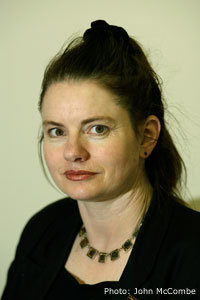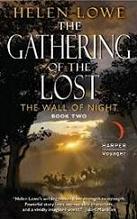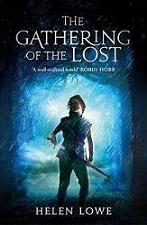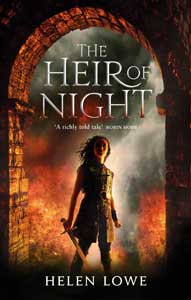“On Worldbuilding” (Reprised)
Introduction:

Open for some serious worldbuilding business…
Last Monday I shared the somewhat astonishing (to me) discovery that I have featured around twenty-eight posts on the topic of worldbuilding on this blog, in its life from May 2010 until now.
So before launching into fresh material, I felt that a review of the twenty eight was in order. Having completed that process, I believe several definitely merit a refeature.
Some of these posts focus on the art and craft of worldbuilding; others are specifically about worldbuilding, or aspects of it, in my own writing.
“On Worldbuilding”, the most comprehensive in the former category, was written as recently as 2019. Given both these factors, I am reposting it today—in total except for much of the introduction. (But for those who like their backlist reposts unabridged, I have included a link to the original immediately below the title.)
I also wrote a companion post in 2019, “My Worldbuilding: A Few Thoughts On Guiding Influences” , which focused specifically on my own books. Although not quite so comprehensive, I’ll repost it for you either on Thursday, or otherwise next Monday, depending on how the week goes.
You may also be pleased to know that twenty-eight preceding posts or not, I still have a few more worldbuilding thoughts to share—so there will be some new material posted as well. (Huzza for the new!)
Also, one of the sparks for looking at worldbuilding again was a reader’s question, which I’ll answer at or toward the end of the post series. So if you’ve questions to ask, please do post them in the comments. If they’re straightforward, I’ll answer them then and there, or otherwise deal with them later in the series.
For today, if worldbuilding interests you, I hope you’ll find some substance in “On Worldbuilding”, whether from a reader’s or writer’s perspective.
~*~
From the Backlist: “On Worldbuilding”
(First posted on February 18, 2019)
Recently on Good Reads (GR) I was asked a question about worldbuilding …
“Can you give any tips on how to construct a…how do I put it…believable world? I’m finding it a bit trying…”
… here are some key elements … that I can identify and which may help other worldbuilders…
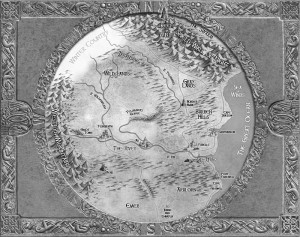
May include maps…: artist, Peter Fitzpatrick
Experimentation:
Just as we’re all different in other ways, so too with worldbuilding: there isna going to be a “one size fits all” approach. If in doubt, though, try experimenting – approaching the worldbuilding in several different ways, e.g.:
- Think about the most compelling aspect of your world and write an opening scene that explores that and see how your thinking and the story evolves from there;
- Storyboard your world, i.e. sit down and map out how the world works in advance, using not only maps of terrain but also images of how it looks re landscape, architecture, people, their clothes etc
- Have some key headings such as: planet; continents; countries; geography; landscapes; vegetation; creatures; people; societies; culture; religion; technology; water, food, and other key resources. (And so on.) But even if you don’t feature all or any of them exhaustively in your story, you as author have to have an idea how they fit together – or even to consciously decide they don’t matter to your particular story at all so you can dispense with worldbuilding altogether.
- Daydream it: think about your world even when you’re not actually working on it. Allow it to colonize your mind and ‘doodle’ your ideas even when you don’t have time to write or world-build in earnest. (Keeping a notebook of some kind is really helpful for this.)
Approaches
In terms of the elements you’re exploring, though, and what you’re trying to achieve with your worldbuilding, here are a few more things to consider / play around with:
The Big Idea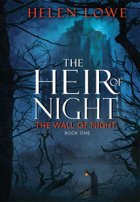
I think it really helps to have a “big idea” that informs your world and therefore your worldbuilding. In The Wall Of Night series the original big idea was “darkness” – the idea of a “night world” in which the central protagonist/antagonist peoples are locked in age-old conflict. It was very influenced by my first reading of Norse myths (i.e. Diegotterdamerung: the twilight of the Gods) and also by books such as Alan Garner’s more Celtic influenced Elidor and – a little later – by Tolkien’s Beleriand in the backstory to The Lord of the Rings. (In its turn very influenced by Norse myth again, so there’s a certain circularity…)
 As I grew up and my original world idea developed, I realized that a dark world, while atmospheric, made for challenging worldbuilding and difficult storytelling, so I revised the “darkness” back to more of a twilit world, with an accompanying stark and bleak landscape, that became the Wall of Night. I also originally thought the wall would be an actual constructed wall (like the Nightwatch’s Wall of Ice in A Game of Thrones) but the more I thought about it the more the “mountain range as shield-wall” idea took hold.
As I grew up and my original world idea developed, I realized that a dark world, while atmospheric, made for challenging worldbuilding and difficult storytelling, so I revised the “darkness” back to more of a twilit world, with an accompanying stark and bleak landscape, that became the Wall of Night. I also originally thought the wall would be an actual constructed wall (like the Nightwatch’s Wall of Ice in A Game of Thrones) but the more I thought about it the more the “mountain range as shield-wall” idea took hold.
At which point I started writing, with the idea of the Wall shaping the Derai as they are first encountered, although as quickly becomes clear the Derai originally shaped the Wall, so “which came first” in terms of influence is by no means clearcut.
 Other “Big Ideas” I (believe I) perceive in Fantasy worldbuilding, which pervade the stories, include:
Other “Big Ideas” I (believe I) perceive in Fantasy worldbuilding, which pervade the stories, include:
- “Winter is Coming” – in George RR Martin’s A Song Of Ice and Fire series (aka A Game Of Thrones)
- “The Everstorm” – in Brandon Sanderson’s Stormlight Archive series
- “Land heirdom” – in Patricia McKillip’s The Riddlemaster of Hed series
- The four elements of fire, earth, air, and water – in Midori Snyder’s Orans’ Cradle series
- The language of music – in Anna Smaill’s The Chimes
Choose A “Spine” for Your Worldbuilding
 If you think of a world as being similar to a human body, the spine is the central column, or core idea, that connects everything else.
If you think of a world as being similar to a human body, the spine is the central column, or core idea, that connects everything else.
Some of the key elements that are drawn upon for speculative fiction worldbuilding include:
- History: especially taking a particular period such as renaissance Italy in Guy Gavriel Kay’s Tigana; the Carolingian era of European medieval history in Kate Elliot’s Crown of Stars series; medieval Korea in Raymond E Feist and Janny Wurts Empire trilogy; and colonial North America in Orson Scott Card’s Alvin Maker series.
-
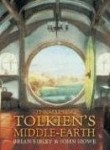
Outstandingly influential worldbuilding
Science: such as the strong emphasis on biology in Julie Czerneda’s worlds and again with Sanderson’s Everstorm and everything that flows from that; or music, its language and structure, in Anna Smaill’s The Chimes.
- Geography/Nature: outstanding examples include JRR Tolkien’s Middle Earth where a strong vision of nature and its forms shapes the characters’—and the readers’—experience of the world; also Ursula K Le Guin’s Earthsea and the archipelago, and Mary Victoria’s world tree in Tymon’s Flight (Chronicles of the Tree series.)
Live It, Breathe It, Experience Your World: Make It Sensory
 In order for the world to be real for readers, it must first be real in your mind so that the characters can experience their surroundings in a real way.
In order for the world to be real for readers, it must first be real in your mind so that the characters can experience their surroundings in a real way.
One really important way of doing that is to remember that the characters must experience through their five senses, i.e. the reader must also know what the characters are seeing; hearing; smelling; touching; and – where appropriate – tasting.
 Yet it is not enough to simply experience, the characters must also respond emotionally to what they experience. For example, in any given situation, does the character feel fear or horror, foreboding or doubt; happiness or confidence? Do they respond to stimuli with joy and delight, or disgust and loathing?
Yet it is not enough to simply experience, the characters must also respond emotionally to what they experience. For example, in any given situation, does the character feel fear or horror, foreboding or doubt; happiness or confidence? Do they respond to stimuli with joy and delight, or disgust and loathing?
 The reality of the worldbuilding will help you, as author, to know how your characters respond. It will also help your readers not only understand what’s going on for your characters, but to understand environment and world through their senses and perceptions, i.e. the world becomes real for all involved.
The reality of the worldbuilding will help you, as author, to know how your characters respond. It will also help your readers not only understand what’s going on for your characters, but to understand environment and world through their senses and perceptions, i.e. the world becomes real for all involved.
And that’s it: I don’t think there’s a great deal more I can say in terms of a few quick tips but I hope something in here will help. 🙂






© Helen Lowe, On Worldbuilding.

